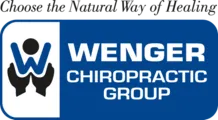June Newsletter: How Chiropractic Treatments Can Improve Your Range of Motion
- Created in Newsletter Library

Improving your Range of Motion with Chiropractic Care
Poor range of motion affects your ability to move freely and easily. Range of motion problems can occur due to problems with the bones, muscles, and soft tissues in and around a joint. If you're struggling with a stiff, painful joint, chiropractic care offers an effective way to relieve pain and improve joint flexibility naturally.
Why Good Range of Motion Is So Important
Full range of motion in a joint makes it possible to raise your arm high enough to retrieve something from an overhead shelf, turn your neck when crossing the street, or walk without limping. If you have a joint restriction and ignore the symptoms, you may eventually face a "use it or lose it" situation. Poor range of motion could become a chronic or permanent problem, particularly if scar tissue forms around a joint.
Without full range of motion, you'll struggle to do many everyday things, from bending to pick up a dropped pen to swinging a golf club to getting up from a chair. Other muscles and joints must handle the load when one joint loses flexibility, which can lead to balance problems and increase your risk of injury.
Diagnosing Your Problem and Creating a Treatment Plan
Chiropractors understand how range of motion problems affect the entire body and offer treatments to improve flexibility and joint movement. Whether your issue is due to an injury, poor posture, surgery, muscle spasms, a dislocation, or another cause, chiropractic care offers an effective treatment option.
During a visit to your chiropractor, your doctor will assess these three types of movement:
- Active. Active range of motion measures how well you can move your joint on your own.
- Passive. Passive movement measures the range of motion when your chiropractor moves your joint.
- Active-Assistance. Active-assistance measures joint movement when your active movement is combined with assistance from someone else or a device, such as a resistance band.
Your visit may also involve X-rays and other tests that help the chiropractor determine the cause and extent of your movement problems. The range-of-motion evaluation and tests help your chiropractor provide a diagnosis and create a treatment plan.
Loosening Tight Tissues with Heat
Your treatment may start with a heat pack placed over your stiff joint. Heat relaxes tight tissues, reduces stiffness and inflammation, and improves circulation.
Massage Relieves Pain and Stiffness in Joints
Massage breaks up scar tissue, eases muscle spasms, relieves pain, and relaxes and stretches tight muscles, tendons, and ligaments, making it easier to move your joint. Massage also increases blood flow and makes it easier for your lymphatic system to remove excess fluids that cause swelling.
Treating Range of Motion Problems with Manipulation Therapy
If a subluxation is responsible for your range of motion problem, your chiropractor may recommend spinal manipulation. Subluxations happen when one or more vertebrae in your spine become misaligned.
During spinal manipulation, your chiropractor realigns your vertebrae by applying a quick burst of pressure to your spine. The treatment improves range of motion, reduces inflammation and stiffness, and eases pain. When your vertebrae are correctly aligned, tension on muscles and soft tissues decreases, improving your range of motion.
You may notice an improvement after one session with the chiropractor, although you may need to schedule a series of appointments to experience the full benefits of chiropractic care.
Joint manipulation, another chiropractic therapy, may be helpful if you have restricted range of motion in the knees, shoulders, elbows, or hips. This therapy involves gently manipulating the joint to improve its alignment and extend its range of motion. Other therapies, including ultrasound, cold laser therapy, or electrotherapy may also be part of your treatment plan.
Exercise
Exercise is an important part of your chiropractic treatment plan. Performing the exercises recommended by your chiropractor supports your treatment and keeps your tissues loose and flexible. A 2009 research study published in the Journal of Chiropractic Medicine compared the effects of spinal manipulation with stretching to stretching exercises alone in two groups of golfers. Full-swing performance was improved in golfers in the spinal manipulation and exercise group after four chiropractic sessions. Golfers who only performed exercises didn't show any improvements in their swings.
Are your joints stiff, tight and painful? Chiropractic treatment can ease your pain and improve your range of motion. Contact us to schedule your appointment.
Sources:
Journal of Chiropractic Medicine: Effect of Spinal Manipulative Therapy with Stretching Compared with Stretching Alone on Full-Swing Performance of Golf Players: A Randomized Pilot Trial, 12/2009
https://www.ncbi.nlm.nih.gov/pmc/articles/PMC2786229/
Arthritis Foundation: Chiropractic Care for Arthritis
American Chiropractic Association: Neck Pain
https://www.acatoday.org/patients/neck-pain-and-chiropractic/
UC Davis Health: Flexibility
https://health.ucdavis.edu/sports-medicine/resources/flexibility
Health Resources

The following resources have been assembled to provide you with more chiropractic wellness care information available on the internet.

American Chiropractic Association
www.amerchiro.org
Palmer University
www.palmer.edu
Foundation for Chiropractic and Education Research
www.fcer.org
Children’s Chiropractic Research Foundation
www.icpa4kids.org
Journal for Vertebral Subluxation Research
www.jvsr.com
International Chiropractors Association
www.chiropractic.org
Chiropractic Resource Organization
www.chiro.org
Chiropractic Online Today
www.chiro-online.com
Chiroweb.com
www.chiroweb.com
World Federation of Chiropractic
www.wfc.org
The Association of Chiropractic Colleges
www.chirocolleges.org
World Chiropractic Alliance
www.worldchiropracticalliance.org
Today’s Chiropractic Magazine
www.todayschiropractic.com
National University of Health Sciences
www.nuhs.edu
Life College of Chiropractic
www.life.edu
New York College of Chiropractic
www.nycc.edu
